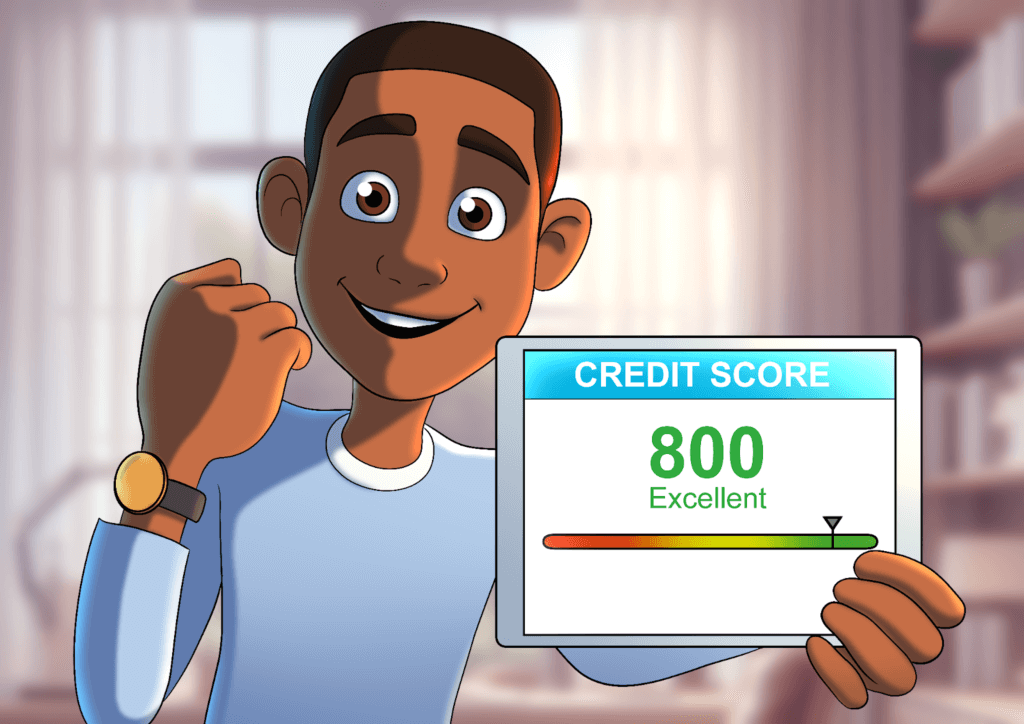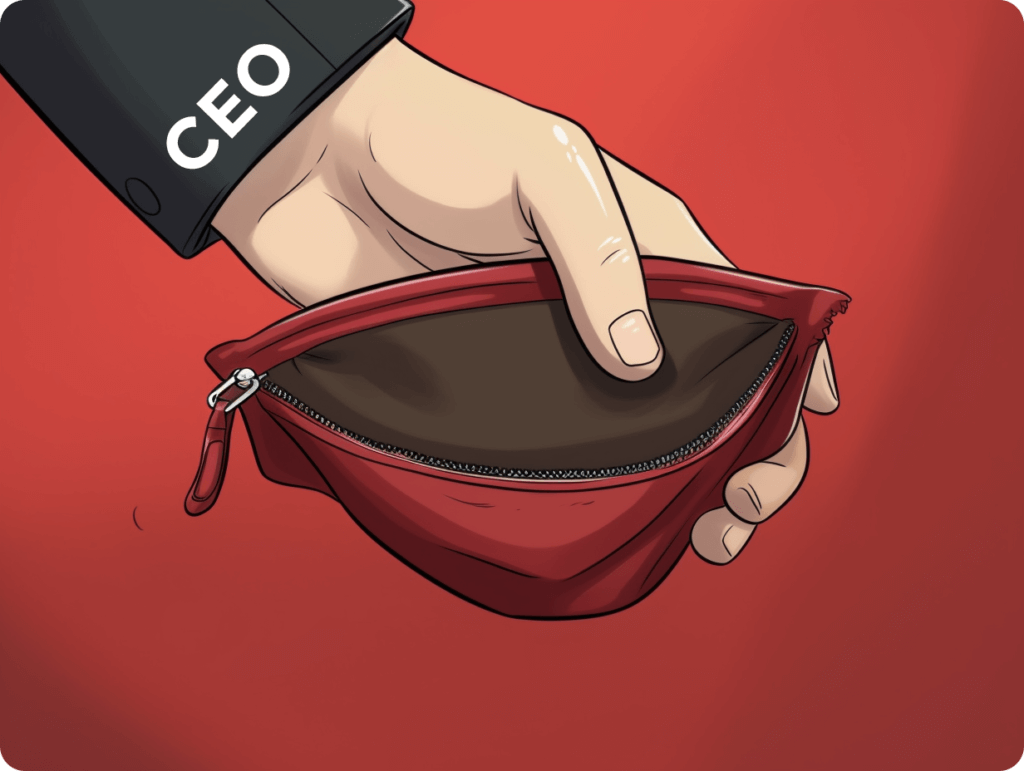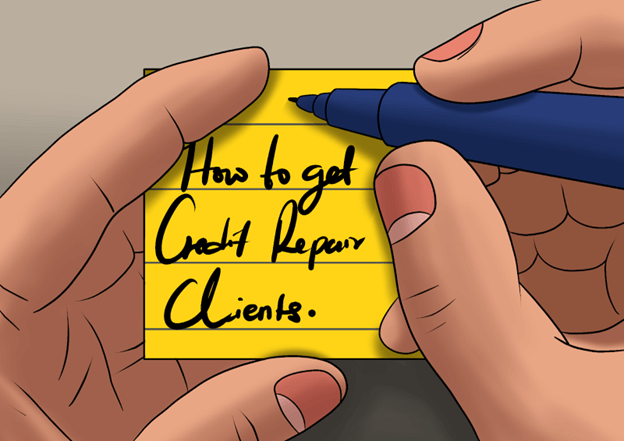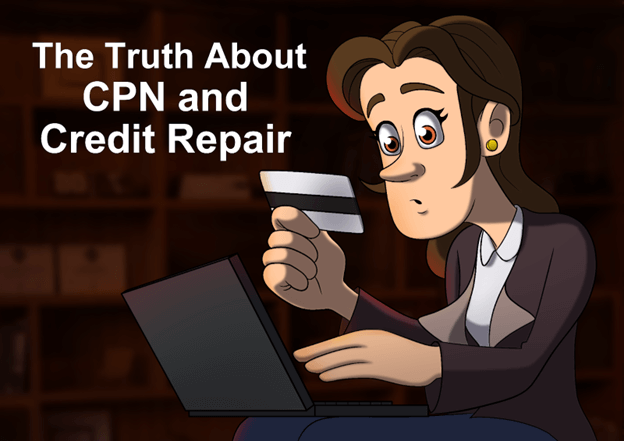- Blogs
- /
- The Ultimate Guide on How to Remove a Charge-Off Without Paying in 3 Easy Steps
The Ultimate Guide on How to Remove a Charge-Off Without Paying in 3 Easy Steps

Summary
Get your financial freedom back by learning the proven steps on how to remove a charge-off without paying.
A charge-off on your credit record can negatively impact your financial stability and seem like an unscalable barrier. Unpaid debts leave these negative marks. They make getting loans, renting an apartment, or even getting reasonable interest rates difficult.
But do not panic; you are not helpless in the fight against errors on your credit report. You can successfully contest and eliminate charge-offs using the appropriate information and strategy. Taking back control of your creditworthiness opens the door to a more favorable financial future.
This in-depth manual will show you how to remove a charge-off without paying and provide the resources and tactics needed to take on charge-offs head-on. Read on as we explore credit reporting, focusing on the impact of charge-offs on credit scores.
Key Takeaways
- Charge-offs show unpaid debts and can stay on your credit report for up to seven years, significantly lowering your credit score.
- Lenders view those with charge-offs in their credit history as high-risk. This makes qualifying for new credit or loans challenging.
- To handle and clear charge-offs, talk with creditors, challenge mistakes, and get expert assistance.
- You can also negotiate settlements or request debt validation from collection agencies.
- When dealing with collection agencies, maintain communication records and be cautious of scams.
- To rebuild credit after removing charge-offs, you can use secured credit cards. Diversifying your credit mix and using budgeting tactics can also help.
- Paying bills on time and using credit responsibly can slowly raise credit scores.
- To avoid future charge-offs, create a plan to manage your debts. Start by assessing your debts, setting goals, and prioritizing repayments.
- To keep your credit score healthy, it’s important to budget, watch your finances, and avoid debt.
- Only consider bankruptcy or debt settlement programs after talking to a lawyer who knows consumer laws.
- You can rebuild credit slowly, even if you don’t remove charge-offs. Just practice responsible credit habits and track them regularly.
- You can use the 609 loophole to dispute wrong information on credit reports. However, it may not work for accurate charge-offs.
- To have good credit in the long term, make payments on time and use credit responsibly.
Understanding Charge-Offs on Credit Reports

A charge-off occurs when a creditor deems a debt uncollectible. This happens after a period of non-payment. It can have significant consequences for your credit report. A charge-off occurs and is reported to the credit bureaus. This indicates that you did not repay the agreed-upon debt. This mark can hurt your credit report for up to seven years. You may have trouble getting new credit or loans later.
Having a charge-off on your credit history can lead to various adverse outcomes. Your credit score drastically drops, making getting reasonable rates and loan approvals harder. Lenders might see you as high risk because of your past financial mismanagement. This could limit the borrowing options available to you. So, dealing with charge-offs is vital to protect your financial future.
Impact on Credit Scores
Charge-offs have long-term effects on your creditworthiness. They show that you were unable or unwilling to repay a debt. This raises concerns for potential lenders. As a result, having one or more charged-off accounts can severely lower your credit scores.
There is hope for rebuilding your credit over time. This can be done by removing charge-offs from your report. You can negotiate with creditors or get professional help to do this.
Yet, removing a charge-off does not guarantee an immediate boost in your credit scores. Rebuilding good credit takes time and consistent effort. You can improve your credit by addressing charge-offs. It also helps to be responsible with your finances.
Frequency of Credit Report Monitoring
It’s essential to check your credit reports often. This helps you find mistakes and problems with charge-offs or other bad marks. You should check your reports at least once yearly, if not more frequently.
How to Remove a Charge-Off Without Paying: Steps and Strategies
1. Evaluating the Validity of the Charge-Off
To determine if a charged-off account is valid, take these steps:
- Ask creditors or collection agencies for documents to prove the debt is accurate.
- Look for any errors or discrepancies in the information provided.
- Find violations of consumer protection laws to know if the charge can be enforced.
2. Strategic Dispute Filing
Filing disputes can help remove wrong or unfair charge-offs, even without paying. Follow these tips:
- Gather evidence such as billing statements, correspondence, or payment proof.
- Prepare dispute letters clearly outlining the inaccuracies and providing supporting evidence.
- Submit your dispute on time and stay in touch with creditors and bureaus.
3. Goodwill Adjustment Requests
Consider requesting goodwill adjustments from creditors to remove charge-offs from your credit reports. Here’s what you should do:
- Prove responsible financial behavior by making timely payments on other accounts.
- Let your lenders know if there were any particular reasons why you couldn’t pay. Some reasons include losing your job or having a medical emergency.
- Write a letter apologizing for past mistakes. It would help if you also showed your positive changes in financial habits.
Removing a charge-off without paying can be challenging but not impossible. To improve your chances of success, assess if it’s valid, file strategic disputes, and request goodwill adjustments. Remember that persistence is vital throughout this process.
Disputing Inaccurate Charge-Offs on Credit Reports
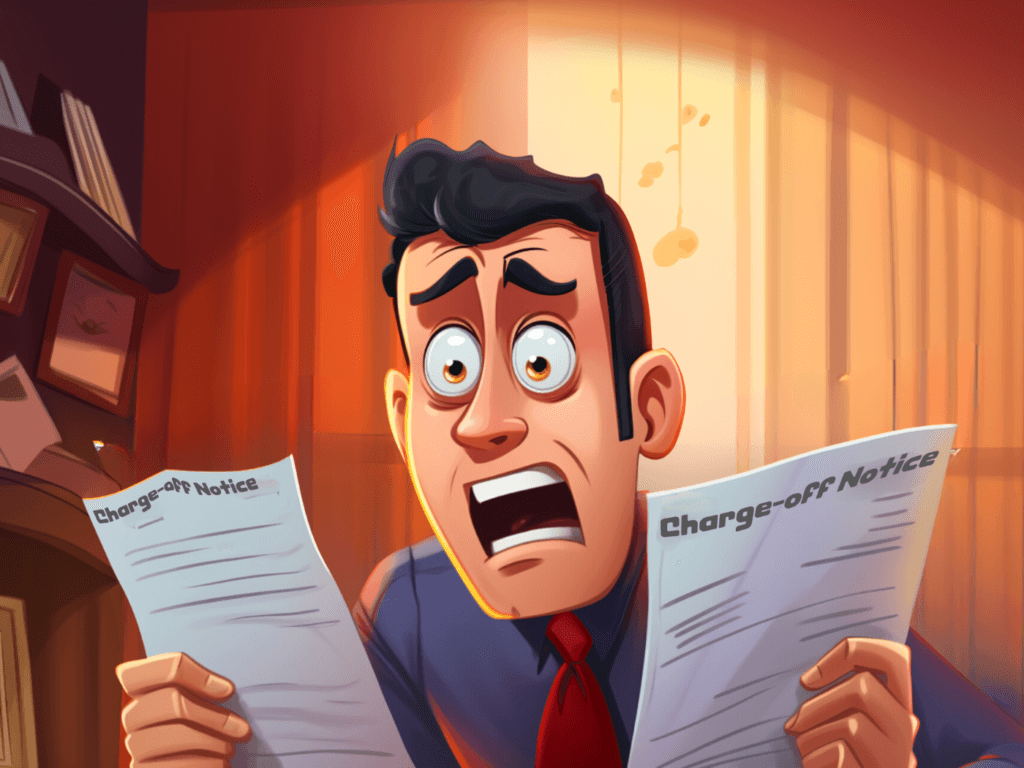
Identifying Reporting Errors
Reporting errors related to charge-offs can occur, such as incorrect dates or amounts. You should thoroughly review credit reports to identify any potential inaccuracies. When you encounter such errors, you have the right to dispute them with the credit bureaus.
If you see errors in your report, contact the credit agencies. Explain the incorrect charge-off. Clearly explain why it has to be removed from your account. By highlighting these discrepancies, you increase your chances of having the charge-off removed.
Crafting a Dispute Letter
To effectively challenge inaccurate charge-offs, writing a well-crafted dispute letter is crucial. This letter is an official request to remove the disputed charge-off from your credit report.
When writing a dispute letter, include essential details. These include your name, address, and account number. Clearly explain why you think the charge-off is wrong. Include any evidence that supports your claim.
Online templates can help you craft a dispute letter. Personalize it according to your circumstances. Be sure to use clear language and avoid unnecessary jargon or complex explanations. The goal is to make it easy for the recipient to understand your case and take appropriate action. Whether it’s a creditor or a credit bureau
Following Up on Disputes
Submitting a dispute about a charge-off is essential. Following up with the credit bureaus and creditors is crucial. This ensures a timely resolution.
Keep track of when you submitted your dispute. You should maintain detailed records of all communication related to the process. Document phone calls, letters sent or received via mail or email, and other responses.
Negotiating with Creditors to Remove charge-offs
Leverage in Negotiations
There are a few tactics you can explore. One option is to settle for less than the total amount owed. This means agreeing to pay a reduced sum to remove the charge-off from your credit report. Another approach is setting up a payment plan with the creditor. This will allow you to repay the debt and gradually remove the charge-off.
Understanding your rights and protections under consumer laws is crucial during negotiations. Ensure you know the Fair Debt Collection Practices Act (FDCPA) and the Fair Credit Reporting Act (FCRA). Creditors must follow laws when pursuing debts and reporting to bureaus. These laws outline what creditors can and cannot do. By knowing your rights, you can assert yourself confidently during negotiations.
Settlement Offers Without Payment
You can use strategies to get settlement offers from creditors. These strategies allow you to avoid making full payments on charged-off accounts. One practical approach is negotiating partial payments. You can propose a smaller amount that fits your budget. This can persuade the creditor or collection agency to accept it as a settlement. Sometimes, credit agencies may agree to remove negative information. They may also update your credit reports after receiving partial payment.
Be careful when reviewing settlement offers. Make sure they are fully documented before making any payments. Carefully review all terms and conditions outlined in the offer letter or agreement. Upon receiving your partial payment, they will update your credit report. They will remove any negative information linked to your account.
Communication with Creditors
Effective communication is vital when dealing with creditors or collection agencies on charge-offs. It’s essential to maintain a professional and respectful tone throughout all interactions. Remember to stay calm and composed. This can help you build rapport and increase the likeliness of success.
Rebuilding Credit After Removing a Charge-Off
Removing charge-offs from your credit report without paying is crucial to rebuilding your credit. Rebuilding credit takes time and effort. Yet, you can improve your credit scores and financial standing with the right strategies. Here are some critical steps to consider:
1. Secured Credit Cards for Repair
A secured credit card is one effective tool for rebuilding credit after a charge-off. These cards need a security deposit as collateral against the credit limit. Using a secure card responsibly can show positive payment behavior. It can also enhance your creditworthiness.
When considering secured cards, be mindful of their eligibility requirements and fees. Search for trustworthy issuers. They should report to all three major credit bureaus. This will guarantee that your responsible card usage appears in your credit history. Using secured cards responsibly involves paying on time and keeping a low balance.
2. Diversifying Credit Mix
Another crucial aspect of rebuilding your credit is diversifying your credit mix. You can do this after removing charge-offs without payment. Lenders often consider the types of accounts you have. This helps them determine your creditworthiness. Having a healthy mix of different kinds of accounts demonstrates financial stability.
Consider adding installment loans or revolving credit to diversify your credit mix. You can do this alongside any existing accounts you have. Installment loans are loans that have fixed monthly payments. They are commonly used for auto or personal loans. You pay these over a specific period.
But revolving credits include lines of credit. They also include retail store cards. You have flexibility in how much you borrow. You also have flexibility in how much you repay each month.
3. Responsible Credit Practices
Responsible credit practices are crucial for long-term success. These practices help repair your credit profile after charge-off removals. Timely payments are vital for building a positive payment history, so pay all bills on time. Late payments can impact your scores. Also, keep your credit usage low.
Dealing with Collection Agencies
1. Understanding Your Rights
When handling charge-offs and collection agencies, knowing your consumer rights is vital. The Fair Debt Collection Practices Act (FDCPA) protects you. It stops unfair debt collection practices. Familiarize yourself with these laws to ensure that your rights are not violated.
If you think a collection agency acted illegally, seek legal help. You can report violations of unethical behavior to the appropriate authorities. Seek guidance from a consumer law attorney specializing in this area. They can assist you in navigating any legal complexities you encounter.
2. Negotiating a Settlement
When dealing with collection agencies about charge-offs, you can negotiate a settlement. Contact the collection agency. Offer to pay part of the debt. In exchange, request they remove the charge-off from your credit report. You should approach the negotiation process carefully. Make a reasonable offer that both parties can agree upon.
3. Requesting Debt Validation
Another strategy is to request debt validation from the collection agency. This means asking them to prove that they have the legal right to collect the debt and that it belongs to you. You can request this information under the Fair Debt Collection Practices Act (FDCPA). If they don’t provide it within 30 days, the charge-off must be removed from your credit report.
4. Disputing Inaccurate Information
If you believe the charge-off on your credit report is wrong, you can contest it. You can dispute it with the collection agency and credit bureaus. To dispute incorrect information, send a written letter with explanations and evidence. The collection agency has 30 days to investigate your dispute. They must also verify, correct, or delete the data.
5. Maintaining Good Communication
Throughout your interactions with collection agencies, it’s essential to maintain good communication. Keep records of all correspondence, including phone calls, letters, or emails. Be polite but firm in your communication. Also, document any agreements or arrangements made.
6. Avoiding Common Pitfalls
To protect your credit, avoid common mistakes that can harm it. When you are trying to remove charge-offs without payment, be cautious. Be careful of scams. There are fraudulent services that promise quick credit repair. These often prey on vulnerable individuals who are desperate for a solution.
It is important to avoid sharing personal information. This applies especially to unauthorized entities claiming to assist. Always verify the legitimacy of any service before providing sensitive information. Reputable credit repair agencies never ask for upfront fees. They also don’t guarantee specific results.
7. When to Seek Professional Help
If you feel overwhelmed or unsure how to remove charge-offs, seek professional help. Credit counseling agencies and credit repair companies offer guidance and support. These services are available throughout the process. They are skilled in collaborating with collection agencies. They comprehend consumer rights under laws like FDCPA.
Sometimes, you will need professional help dealing with charge-offs and collection agencies. Consult with a consumer law attorney for guidance on complex situations. They specialize in legal implications surrounding charge-offs.
A reliable credit repair agency can assist you in removing charge-offs from your credit report. They will guide you through the process. These professionals have worked with creditors and collections. They can negotiate on your behalf.
Hiring a professional has a cost. We must weigh the potential benefits against the fees involved. Consider reaching out to several professionals and obtaining quotes before making a decision.
Also, removing a charge-off without payment is not guaranteed. The process can also be time-consuming.

Managing Debt to Prevent Future Charge-Offs
Creating a Debt Management Plan
Developing a detailed plan for managing your debt is essential. Especially after you remove charge-offs from your credit report, this plan will help prevent future charge-offs.
You can regain control of your finances by doing three things. First, assess your current debts. Second, set realistic goals. Third, develop strategies for repayment.
A debt management plan offers several benefits. It lets you clearly understand your outstanding debts and their account balances. The knowledge serves as the foundation for creating a plan. The plan is practical and tailored to your financial situation. It also helps you focus on which debts you should first pay off based on interest rates and other factors. Focusing on high-interest debts initially can cut the cost of borrowing over time.
When creating a debt management plan, consider debt consolidation. You can also work with nonprofit credit counseling agencies. Debt consolidation combines several debts into one loan for simpler payment management. Nonprofit credit counseling agencies help negotiate with creditors and develop repayment plans. They offer guidance and support tailored to your financial capabilities.
Budgeting Tactics for Debt Prevention
Maintaining good financial health requires implementing practical budgeting tactics to prevent future charge-offs. One key aspect is tracking expenses diligently. Recording every expenditure, big or small, helps you understand where your money goes. You can then find areas where you can cut spending.
Prioritizing savings is another critical element of budgeting for debt prevention. Establishing an emergency fund is crucial. It serves as a safety net during unexpected financial challenges. Having a buffer protects against setbacks, like missed payments or debt.
Living within one’s means is essential in avoiding falling into debt traps again. This means spending less than you earn. And also avoiding unnecessary purchases that may strain your finances. Maintain a healthy financial balance by practicing self-discipline. Distinguish between wants and needs.
Exploring Alternatives when Removal Isn't Possible
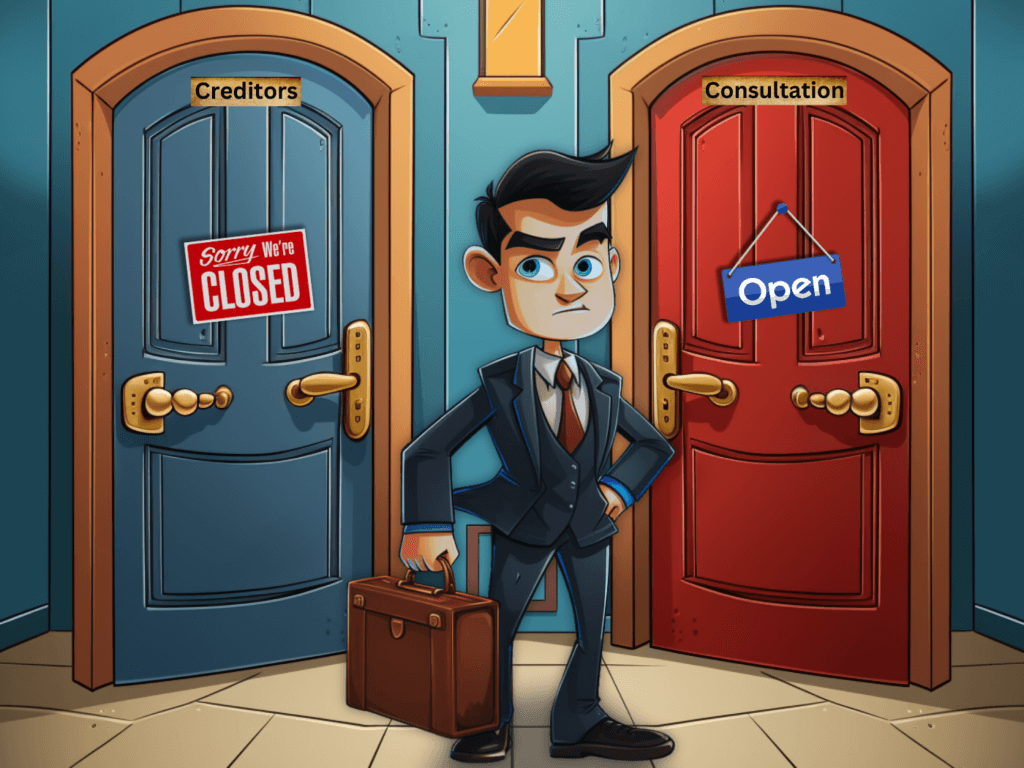
Developing a Long-Term Credit Strategy
Individuals unable to remove charge-offs without payment must develop a long-term credit strategy. This is crucial. While removing charge-offs is desirable, it’s also essential to focus on improving overall credit health in the long run. Individuals can achieve sustained improvement over time. To achieve this, individuals can set goals and develop healthy financial habits. Additionally, they need to track their credit health regularly.
Setting clear goals is an essential part of a long-term credit strategy. Having clear goals can keep individuals motivated and focused on their financial objectives. These objectives include paying off debts, increasing savings, and building credit. Establishing healthy financial habits can contribute to overall credit wellness. Some examples of these habits include budgeting, saving money, and making timely payments.
Continuous monitoring of one’s credit health is also crucial for long-term success. Individuals can identify errors or discrepancies on credit reports by checking them regularly. This helps to prevent any negative impact on their credit scores.
Individuals can ensure the accuracy of their credit reports by addressing issues promptly. They should use dispute processes with the respective credit bureaus. This helps to maintain their good standing.
Legal Alternatives and Consultation
When removing charge-offs without payment is impossible, you must consider legal options. Two standard options are bankruptcy and debt settlement programs. Before considering these options, it’s crucial to consult with a consumer law attorney. They can help navigate the significant implications on your finances.
Bankruptcy grants individuals a new beginning. It eliminates or reduces specific debts. But bankruptcy has severe consequences. It should only be a last resort. Understand its impact on personal finances before considering it.
Debt settlement programs negotiate with creditors to reduce the owed amount. In return, they accept lump sum or structured repayment plans. These programs can assist people in reducing their debt. But they may harm credit scores.
Rebuilding Credit After Removing Charge-Off Without Paying
Incremental Improvement Techniques
Building your credit is crucial, regardless of whether you paid charge-offs. One technique is to practice responsible credit use. This means using your available credit wisely and keeping your balances low. Doing so demonstrates to lenders that you can manage credit responsibly.
Another essential strategy is making timely payments on all your existing accounts. Consistently paying your bills shows commitment to improving financial habits.
Prompt payment of bills indicates dedication to better money management. A positive payment history can outweigh past negative marks over time. This includes charge-offs.
Importance of On-Time Payments
It is crucial to make payments on time. This will help rebuild your creditworthiness after removing charge-offs without compensation. Consistently meeting payment deadlines establishes your reliable track record of financial responsibility. Lenders and creditors look favorably upon borrowers who show this level of commitment.
Think of it like building a solid foundation for a house. Each on-time payment adds another brick to strengthen the structure of your creditworthiness. The weight of charge-offs decreases each month due to payment history.
Long-Term Credit Health Maintenance
Maintaining long-term credit health is essential once you have removed charge-offs without payment. Monitoring your credit plays a significant role in this process. Always check your credit reports for accuracy and address any errors.
Also, monitoring responsible borrowing habits is essential for long-term credit health maintenance. It would be best if you only took on new debt when necessary. Make sure you can comfortably handle the payments. Avoid maxing out credit cards. Accumulating excessive debt can harm your credit score.
Remember that rebuilding credit takes time and patience; it’s not an overnight process. Consistently follow strategies like responsible use and timely payments. Doing this can boost your creditworthiness. It also enhances your chances of securing favorable loan terms.
The 609 Loophole and its Role in Removing Accurate Charge-Offs
The 609 is a provision in the FCRA. It allows consumers to dispute credit report mistakes. This provision helps consumers challenge inaccurate or incomplete information effectively. Some individuals have attempted to exploit this loophole. However, the loophole was not intended for that purpose. This loophole doesn’t remove valid charge-offs unless payment is made.
Understanding the Fair Credit Reporting Act
The Fair Credit Reporting Act (FCRA) is an important law that safeguards consumers’ rights. The act regulates credit reporting agencies. It also governs creditors and debt collectors. This regulation ensures fair and accurate reporting. Under the FCRA, key provisions protect consumers from inaccurate or unfair charge-offs.
The FCRA states that credit reporting agencies must provide accurate information. The information should be about consumers’ credit history. Consumers can dispute a charge-off with the credit reporting agency if reported inaccurately. Creditors and debt collectors have to investigate any disputes promptly. They need to correct any errors discovered within a set time.
Consumers have the right to ask creditors or agencies for validation. This is a necessary provision of the FCRA. If you think a charge-off is wrong, you can request verification. Ask for proof that you owe the debt. They might have to delete the charge-off if they don’t submit enough evidence in time.
Limitations of the 609 Loophole
The 609 loophole does not guarantee success. Charge-offs may persist without payment. This provision tackles errors and inaccuracies on credit reports. It deals specifically with incorrect personal information or outdated accounts. It may not be effective for removing legitimate debts owed to creditors.
Disputing Inaccurate Information
To dispute credit report inaccuracies, use the 609 loophole. Send a written dispute letter to the credit bureaus. In your letter, identify the incorrect information. Provide supporting documentation for proof.
The Importance of Documentation
Providing thorough documentation is crucial when disputing a charge-off through the 609 loophole. You should provide records of payments made towards the debt. Also, include correspondence with creditors about settlements or payment plans. Gather any other evidence that supports your claim of inaccuracies.
The Role of Credit Bureaus and Creditors
When you send a dispute letter, the credit bureaus have to respond. They must investigate within a reasonable timeframe according to the law. They will reach out to the creditor who reported the charge-off. They will ask for verification to confirm its accuracy. The creditor has to provide sufficient evidence within a specific time. If they fail, the credit bureau must remove or correct the item on your credit report.
Crafting a 609 Letter
A 609 letter is an effective tool for challenging charge-offs on your credit report. Section 609 of the FCRA gives this its name. Individuals can dispute inaccurate or incomplete credit report information.
You can exercise your rights under the FCRA by sending a well-crafted 609 letter. You can request evidence from creditors or collection agencies in this letter. They should support the charge-off. To draft an effective 609 letter:
- Clearly state your intention to dispute the charged-off account and request debt validation.
- Provide details about the account, including dates, amounts owed, and other relevant information.
- Request copies of any documentation proving your liability for the debt.
- Send your certified mail letter. Include the requested return receipt. This will ensure proof of delivery.

Rebuilding Credit Without Removing a Charge-Off
Negotiating a Payment Plan
If you cannot remove a charge-off without paying, you can negotiate a payment plan with the creditor. Contact the creditor and explain your financial situation. They may be willing to work with you and create a more manageable payment plan that fits within your budget.
You can prove responsible financial behavior. This will help you gradually rebuild your credit. Make sure to make consistent payments.
Paying for Deletion
One strategy is to negotiate a “pay for deletion” agreement. This can be done with the creditor or collection agency. You can offer to pay off the debt and request the removal of the charge-off from your credit report. Not all creditors or collection agencies will agree to this. But exploring this arrangement is worth it. It can significantly improve your credit score if successful.
Building Positive Credit History
Building a positive credit history in other areas is essential. It’s crucial while dealing with a charge-off on your credit report. One way to do this is by obtaining a secured credit card. To get a secure card, give an initial deposit as collateral. This collateral then becomes your credit limit. Using the card responsibly can help establish a positive payment history.
Becoming an Authorized User
Another option is becoming an authorized user on someone else’s credit card account. Suppose you have family or friends willing to add you as an authorized user on their account. Their positive payment history will also reflect on your credit report. However, the primary account holder must have good financial habits. Harmful activity could impact your credit.
Monitoring Your Credit Report
It is essential to check your credit report regularly. This is especially true when trying to rebuild credit after a charge-off. Watch for any changes made by creditors or collection agencies. Look for any discrepancies or errors that may negatively affect your credit score.
Conclusion
Now you understand charge-offs and different ways to handle them. This article offered insights and steps to remove inaccurate charge-offs. You can negotiate with creditors or rebuild your credit after a charge-off.
Now is the time to take action. Start implementing these strategies to improve your credit. It may not always be possible to remove a charge-off without paying. However, do not let that discourage you. Focus on negotiating with creditors—dispute inaccuracies on your credit report. Explore alternatives to minimize the impact of a charge-off.
Take control of your credit and make informed decisions to rebuild your credit score. Work towards achieving your financial goals. Stay proactive. Stay persistent. Remember, every step counts towards a brighter financial future.
FAQs
1. How can I remove a charge-off from my credit report without paying?
Unfortunately, it’s unlikely to remove a charge-off without paying. Lenders report charge-offs when they believe the debtor won’t pay the debt. You can negotiate with the creditor for a pay-for-delete agreement. Or, you can seek professional help from credit repair services.
2. Can I dispute a charge-off on my credit report?
Yes, you can dispute inaccurate information on your credit report, including a charge-off. You have the option to send a dispute letter to the credit bureaus. In this letter, you can include evidence that supports your claim. If the information is incorrect, it will be removed from your report.
3. Will paying off a charge-off improve my credit score?
Paying off a charge-off won’t automatically improve your credit score. However, it shows that you’ve resolved the debt, which can positively impact your score. You must pay bills on time and handle debts responsibly to have a good payment history.
4. How long does a charge-off stay on my credit report?
A charge-off can remain on your credit report for up to seven years from the delinquency date. This negative mark can significantly impact your creditworthiness during that period. But, its impact diminishes over time as you build positive financial habits.
5. Can I negotiate with creditors to settle for less than the total amount owed on a charge-off?
Yes, negotiating with creditors for a settlement is possible in some cases. Creditors may agree to accept less than the total amount owed. This serves as an alternative to receiving no payment at all. Approaching them with an offer and ensuring you document any settlement agreement in writing is crucial.
Our Latest Blogs:
FREE Strategy Session to Fix Your Credit Blogs / Facebook Twitter Linkedin Instagram Share Summary A good credit score...

ThisIsJohnWilliams

ThisIsJohnWilliams
FREE Strategy Session to Fix Your Credit Blogs / As a company involved in credit repair, you understand that...

ThisIsJohnWilliams

ThisIsJohnWilliams
FREE Strategy Session to Fix Your Credit Blogs / Sometimes, our credit scores aren’t as high as we want....

ThisIsJohnWilliams
FREE Strategy Session to Fix Your Credit Blogs / During credit repair, shortcuts and quick fixes can be tempting....

